Cover
Principles of Nano-Optics
Title
Copyright
Dedication
Contents
Preface to the first edition
Preface to the second edition
1 Introduction
1.1 Nano-optics in a nutshell
1.2 Historical survey
1.3 Scope of the book
References
2 Theoretical foundations
2.1 Macroscopic electrodynamics
2.2 Wave equations
2.3 Constitutive relations
2.4 Spectral representation of time-dependent fields
2.5 Fields as complex analytic signals
2.6 Time-harmonic fields
2.7 Longitudinal and transverse fields
2.8 Complex dielectric constant
2.9 Piecewise homogeneous media
2.10 Boundary conditions
2.10.1 Fresnel reflection and transmission coefficients
2.11 Conservation of energy
2.12 Dyadic Green functions
2.12.1 Mathematical basis of Green functions
2.12.2 Derivation of the Green function for the electric field
2.12.3 Time-dependent Green functions
2.13 Reciprocity
2.14 Evanescent fields
2.14.1 Energy transport by evanescent waves
2.14.2 Frustrated total internal reflection
2.15 Angular spectrum representation of optical fields
2.15.1 Angular spectrum representation of the dipole field
Problems
References
3 Propagation and focusing of optical fields
3.1 Field propagators
3.2 Paraxial approximation of optical fields
3.2.1 Gaussian laser beams
3.2.2 Higher-order laser modes
3.2.3 Longitudinal fields in the focal region
3.3 Polarized electric and polarized magnetic fields
3.4 Far-fields in the angular spectrum representation
3.5 Focusing of fields
3.6 Focal fields
3.7 Focusing of higher-order laser modes
3.8 The limit of weak focusing
3.9 Focusing near planar interfaces
3.10 The reflected image of a strongly focused spot
Problems
References
4 Resolution and localization
4.1 The point-spread function
4.2 The resolution limit(s)
4.2.1 Increasing resolution through selective excitation
4.2.2 Axial resolution
4.2.3 Resolution enhancement through saturation
4.3 Principles of confocal microscopy
4.4 Axial resolution in multiphoton microscopy
4.5 Localization and position accuracy
4.5.1 Theoretical background
4.5.2 Estimating the uncertainties of fit parameters
4.6 Principles of near-field optical microscopy
4.6.1 Information transfer from near-field to far-field
4.7 Structured-illumination microscopy
Problems
References
5 Nanoscale optical microscopy
5.1 The interaction series
5.2 Far-field optical microscopy techniques
5.2.1 Confocal microscopy
5.2.2 The solid immersion lens
5.2.3 Localization microscopy
5.3 Near-field excitation microscopy
5.3.1 Aperture scanning near-field opticalmicroscopy
5.4 Near-field detection microscopy
5.4.1 Scanning tunneling optical microscopy
5.4.2 Field-enhanced near-field microscopy with crossed polarization
5.5 Near-field excitation and detection microscopy
5.5.1 Field-enhanced near-field microscopy
5.5.2 Double-passage near-field microscopy
5.6 Conclusion
Problems
References
6 Localization of light with near-field probes
6.1 Light propagation in a conical transparent dielectric probe
6.2 Fabrication of transparent dielectric probes
6.2.1 Tapered optical fibers
Etching
Heating and pulling
6.3 Aperture probes
6.3.1 Power transmission through aperture probes
6.3.2 Field distribution near small apertures
Plane wave at normal incidence
Plane wave at arbitrary incidence
Bethe–Bouwkamp theory applied to aperture probes
6.3.3 Field distribution near aperture probes
6.3.4 Enhancement of transmission and directionality
6.4 Fabrication of aperture probes
6.4.1 Aperture formation by focused-ion-beammilling
6.4.2 Alternative aperture-formation schemes
6.5 Optical antenna probes
6.5.1 Solid metal tips
Fabrication of solidmetal tips
Resonant probes
6.6 Conclusion
Problems
References
7 Probe–sample distance control
7.1 Shear-force methods
7.1.1 Optical fibers as resonating beams
7.1.2 Tuning-fork sensors
7.1.3 The effective-harmonic-oscillator model
7.1.4 Response time
7.1.5 Equivalent electric circuit
7.2 Normal-force methods
7.2.1 Tuning fork in tapping mode
7.2.2 Bent-fiber probes
7.3 Topographic artifacts
7.3.1 Phenomenological theory of artifacts
7.3.2 Example of optical artifacts
7.3.3 Discussion
Problems
References
8 Optical interactions
8.1 The multipole expansion
8.2 The classical particle–field Hamiltonian
8.2.1 Multipole expansion of the interaction Hamiltonian
8.3 The radiating electric dipole
8.3.1 Electric dipole fields in a homogeneous space
8.3.2 Dipole radiation
8.3.3 Rate of energy dissipation in inhomogeneous environments
8.3.4 Radiation reaction
8.4 Spontaneous decay
8.4.1 QED of spontaneous decay
8.4.2 Spontaneous decay and Green’s dyadics
8.4.3 Local density of states
8.5 Classical lifetimes and decay rates
8.5.1 Radiation in homogeneous environments
The Lorentzian lineshape function
The Fano lineshape function
8.5.2 Radiation in inhomogeneous environments
8.5.3 Frequency shifts
8.6 Dipole–dipole interactions and energy transfer
8.6.1 Multipole expansion of the Coulombic interaction
8.6.2 Energy transfer between two particles
8.7 Strong coupling (delocalized excitations)
8.7.1 Coupled oscillators
8.7.2 Adiabatic and diabatic transitions
8.7.3 Coupled two-level systems
8.7.4 Entanglement
Problems
References
9 Quantum emitters
9.1 Types of quantum emitters
9.1.1 Fluorescent molecules
Excitation of fluorescent molecules
Relaxation of flurescentmolecules
9.1.2 Semiconductor quantum dots
Surface passivation
Excitation of quantum dots
Coherent control of excitons
9.1.3 Color centers in diamond
Optically detected magnetic resonance (ODMR) in diamond NV centers
Stimulated-emission-depletion microscopy of NV centers in diamond
9.2 The absorption cross-section
9.3 Single-photon emission by three-level systems
9.3.1 Steady-state analysis
9.3.2 Time-dependent analysis
9.4 Single molecules as probes for localized fields
9.4.1 Field distribution in a laser focus
9.4.2 Probing strongly localized fields
Field distribution near subwavelength apertures
Field distribution near tips and particles
9.5 Conclusion
Problems
References
10 Dipole emission near planar interfaces
10.1 Allowed and forbidden light
10.2 Angular spectrum representation of the dyadic Green function
10.3 Decomposition of the dyadic Green function
10.4 Dyadic Green functions for the reflected and transmitted fields
10.5 Spontaneous decay rates near planar interfaces
10.6 Far-fields
10.7 Radiation patterns
10.8 Where is the radiation going?
10.9 Magnetic dipoles
10.10 The image dipole approximation
10.10.1 Vertical dipole
10.10.2 Horizontal dipole
10.10.3 Including retardation
Problems
References
11 Photonic crystals, resonators, and cavity optomechanics
11.1 Photonic crystals
11.1.1 The photonic bandgap
11.1.2 Defects in photonic crystals
11.2 Metamaterials
11.2.1 Negative-index materials
11.2.2 Anomalous refraction and left-handedness
11.2.3 Imaging with negative-index materials
11.3 Optical microcavities
11.3.1 Cavity perturbation
11.4 Cavity optomechanics
Problems
References
12 Surface plasmons
12.1 Noble metals as plasmas
12.1.1 Plasma oscillations
12.1.2 The ponderomotive force
12.1.3 Screening
12.2 Optical properties of noble metals
12.2.1 Drude–Sommerfeld theory
12.2.2 Interband transitions
12.3 Surface plasmon polaritons at plane interfaces
12.3.1 Properties of surface plasmon polaritons
Plasmon wavelength
Plasmon propagation length
Plasmon evanescent-field decay length
Intensity enhancement
12.3.2 Thin-film surface plasmon polaritons
12.3.3 Excitation of surface plasmon polaritons
The plasmon dispersion relation
Excitation configurations
12.3.4 Surface plasmon sensors
12.4 Surface plasmons in nano-optics
12.4.1 Plasmons supported by wires and particles
Transverse plasmon resonances of a thin wire
Propagating surface plasmon polaritons on thin wires
Plasmon resonances of a small spherical particle
Plasmon resonances of non-spherical particles
Local interactions with particle plasmons: sensing applications
12.4.2 Plasmon resonances of more complex structures
12.4.3 Surface-enhanced Raman scattering
12.5 Nonlinear plasmonics
12.6 Conclusion
Problems
References
13 Optical antennas
13.1 Significance of optical antennas
13.2 Elements of classical antenna theory
13.3 Optical antenna theory
13.3.1 Antenna parameters
Antenna efficiency
Intrinsic efficiency
Radiation pattern
Directivity
Effective area
Gain
The Chu limit
Reciprocity
Antenna aperture
Friis equation
Effective wavelength
Radiation resistance
Lumped-circuit elements
Kinetic inductance
The density of states
13.3.2 Antenna-coupled light–matter interactions
13.3.3 Coupled-dipole antennas
13.4 Quantum emitter coupled to an antenna
13.5 Quantum yield enhancement
13.6 Conclusion
Problems
References
14 Optical forces
14.1 Maxwell's stress tensor
14.2 Radiation pressure
14.3 Lorentz force density
14.4 The dipole approximation
14.4.1 Time-averaged force
14.4.2 Monochromatic fields
14.4.3 Self-induced back-action
14.4.4 Saturation behavior for near-resonance excitation
14.4.5 Beyond the dipole approximation
14.5 Optical tweezers
14.6 Angular momentum and torque
14.7 Forces in optical near-fields
14.8 Conclusion
Problems
References
15 Fluctuation-induced interactions
15.1 The fluctuation–dissipation theorem
15.1.1 The system response function
15.1.2 Johnson noise
15.1.3 Dissipation due to fluctuating external fields
15.1.4 Normal and antinormal ordering
15.2 Emission by fluctuating sources
15.2.1 Blackbody radiation
15.2.2 Coherence, spectral shifts, and heat transfer
15.3 Fluctuation-induced forces
15.3.1 The Casimir–Polder potential
15.3.2 Electromagnetic friction
15.4 Conclusion
Problems
References
16 Theoretical methods in nano-optics
16.1 The multiple-multipole method
16.2 Volume-integral methods
16.2.1 The volume-integral equation
16.2.2 The method of moments (MOM)
16.2.3 The coupled-dipole method (CDM)
16.2.4 Equivalence of the MOM and the CDM
16.3 Effective polarizability
16.4 The total Green function
16.5 Conclusion
Problems
References
Appendix A Semi-analytical derivation of the atomic polarizability
A.1 Steady-state polarizability for weak excitation fields
A.2 Near-resonance excitation in the absence of damping
A.3 Near-resonance excitation with damping
Appendix B Spontaneous emission in the weak-coupling regime
B.1 Weisskopf–Wigner theory
B.2 Inhomogeneous environments
References
Appendix C Fields of a dipole near a layered substrate
C.1 Vertical electric dipole
C.2 Horizontal electric dipole
C.3 Definition of the coefficients Aj, Bj, and Cj
Appendix D Far-field Green functions
Index
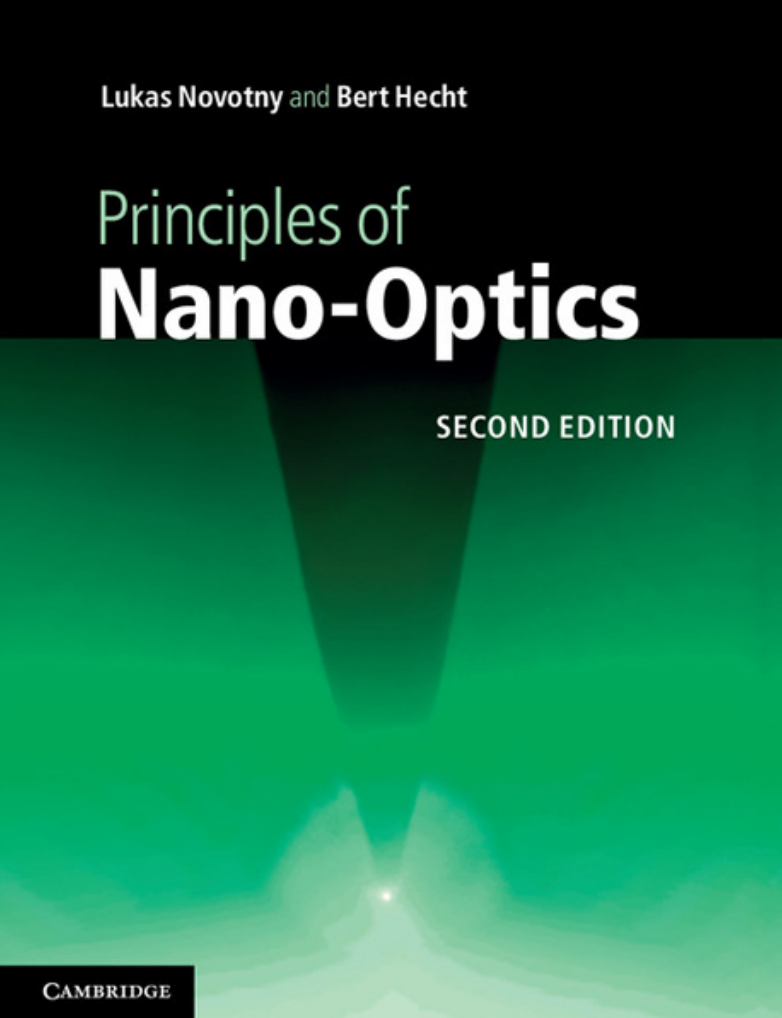
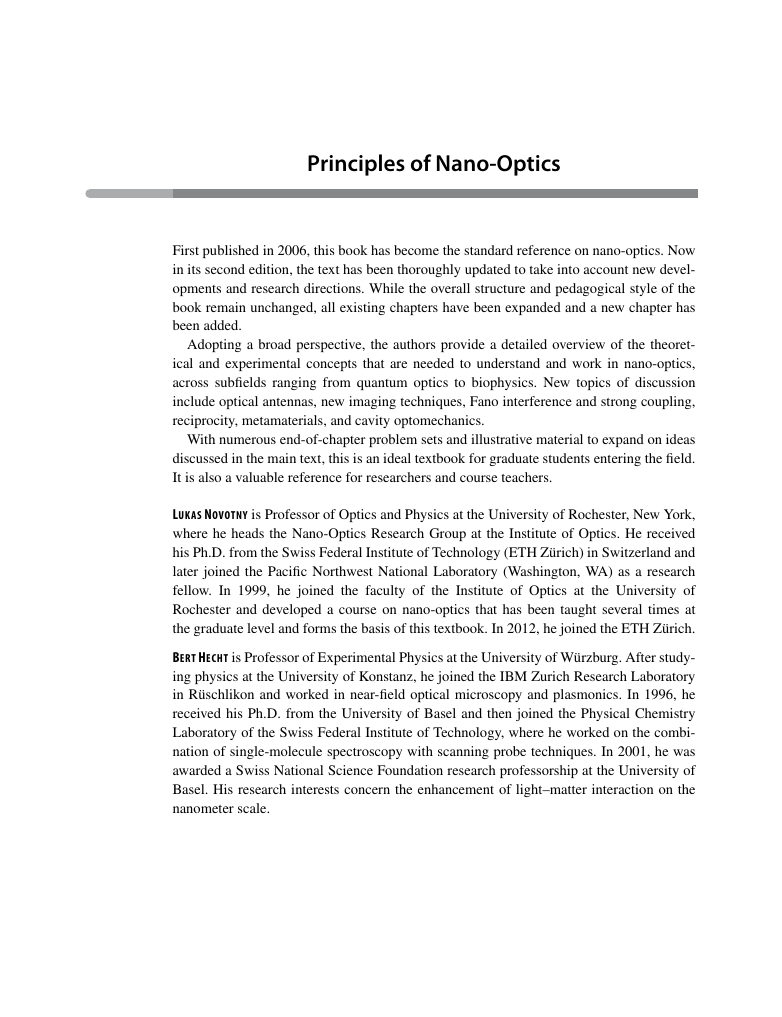
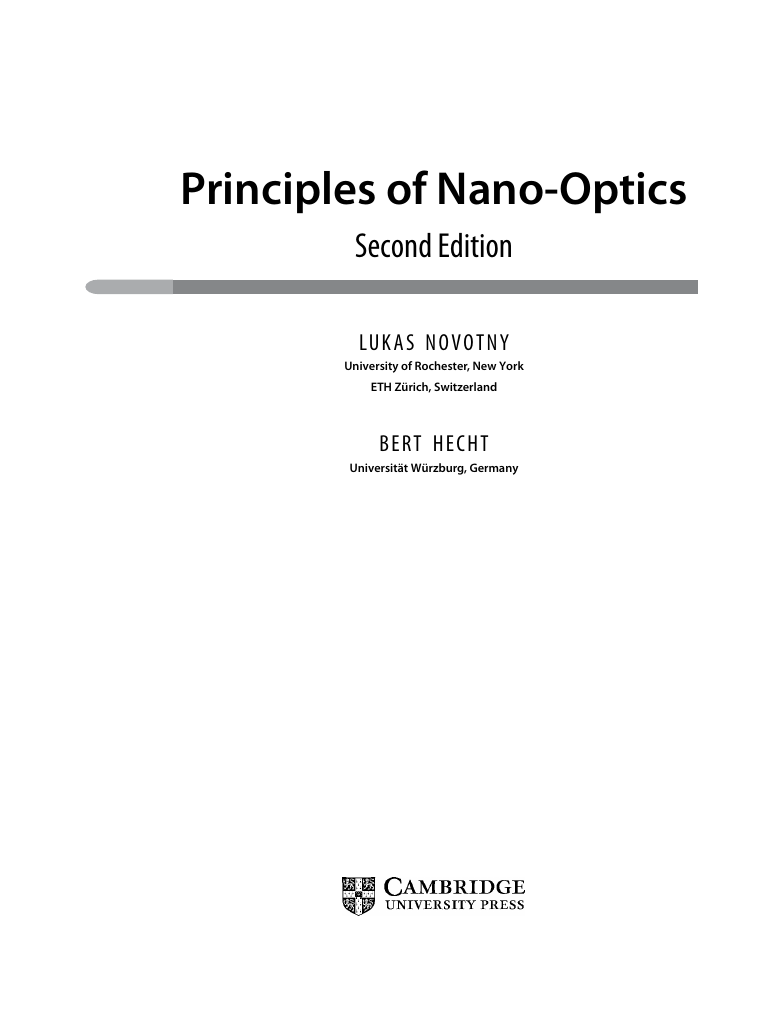
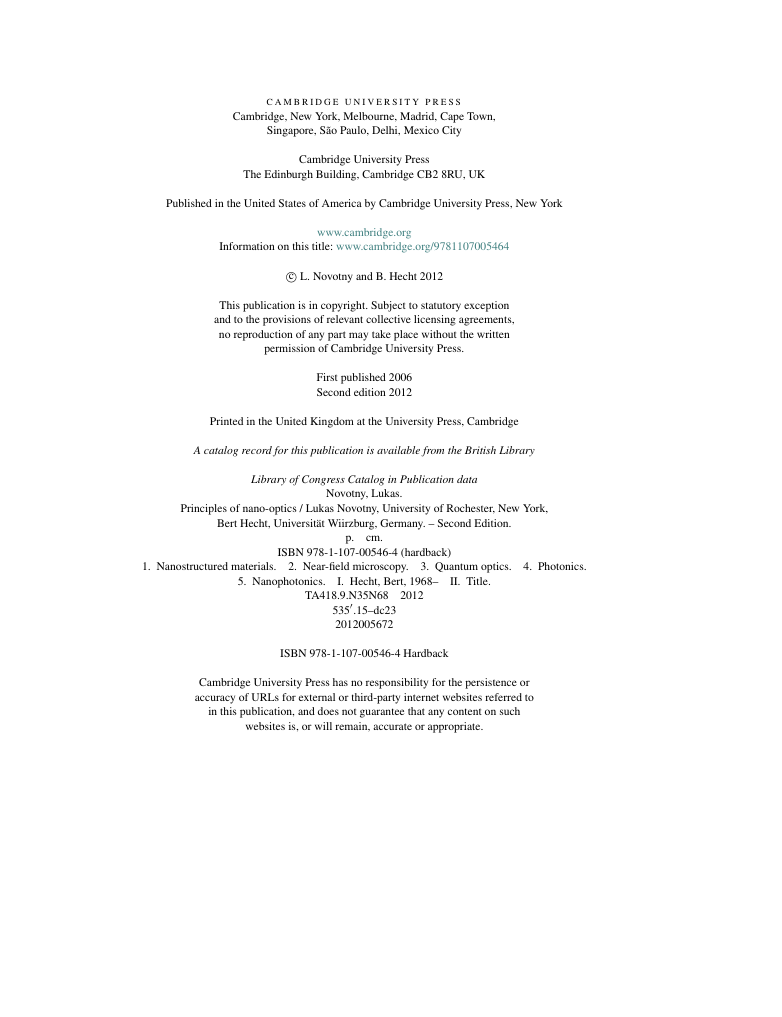


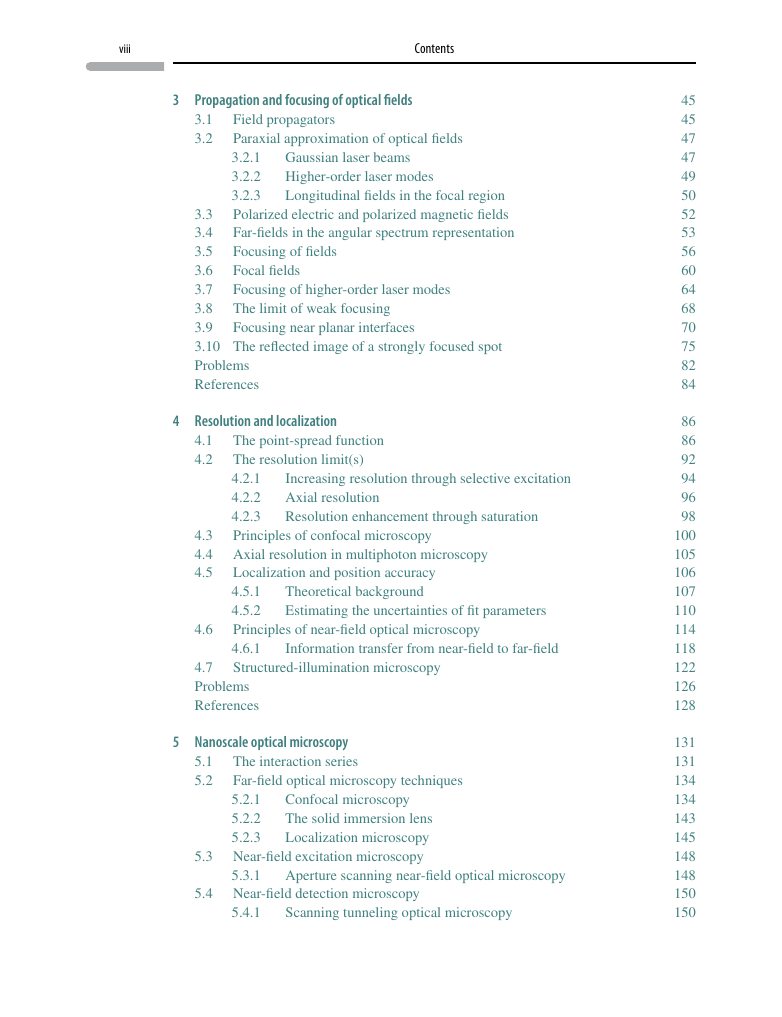
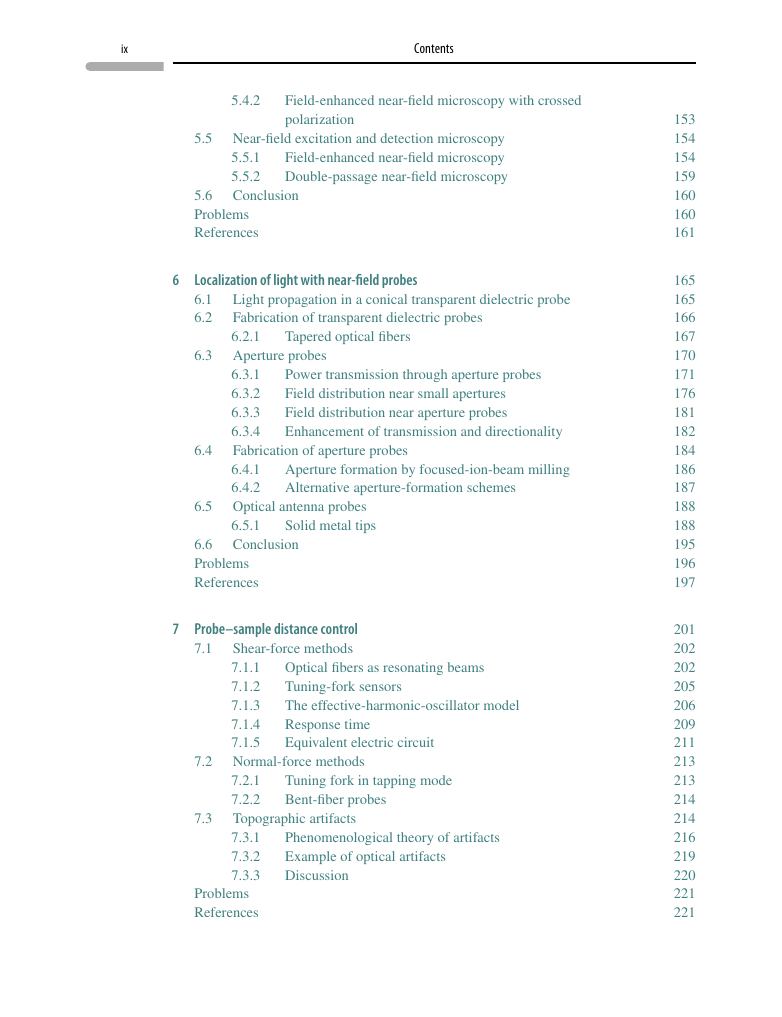








 2023年江西萍乡中考道德与法治真题及答案.doc
2023年江西萍乡中考道德与法治真题及答案.doc 2012年重庆南川中考生物真题及答案.doc
2012年重庆南川中考生物真题及答案.doc 2013年江西师范大学地理学综合及文艺理论基础考研真题.doc
2013年江西师范大学地理学综合及文艺理论基础考研真题.doc 2020年四川甘孜小升初语文真题及答案I卷.doc
2020年四川甘孜小升初语文真题及答案I卷.doc 2020年注册岩土工程师专业基础考试真题及答案.doc
2020年注册岩土工程师专业基础考试真题及答案.doc 2023-2024学年福建省厦门市九年级上学期数学月考试题及答案.doc
2023-2024学年福建省厦门市九年级上学期数学月考试题及答案.doc 2021-2022学年辽宁省沈阳市大东区九年级上学期语文期末试题及答案.doc
2021-2022学年辽宁省沈阳市大东区九年级上学期语文期末试题及答案.doc 2022-2023学年北京东城区初三第一学期物理期末试卷及答案.doc
2022-2023学年北京东城区初三第一学期物理期末试卷及答案.doc 2018上半年江西教师资格初中地理学科知识与教学能力真题及答案.doc
2018上半年江西教师资格初中地理学科知识与教学能力真题及答案.doc 2012年河北国家公务员申论考试真题及答案-省级.doc
2012年河北国家公务员申论考试真题及答案-省级.doc 2020-2021学年江苏省扬州市江都区邵樊片九年级上学期数学第一次质量检测试题及答案.doc
2020-2021学年江苏省扬州市江都区邵樊片九年级上学期数学第一次质量检测试题及答案.doc 2022下半年黑龙江教师资格证中学综合素质真题及答案.doc
2022下半年黑龙江教师资格证中学综合素质真题及答案.doc